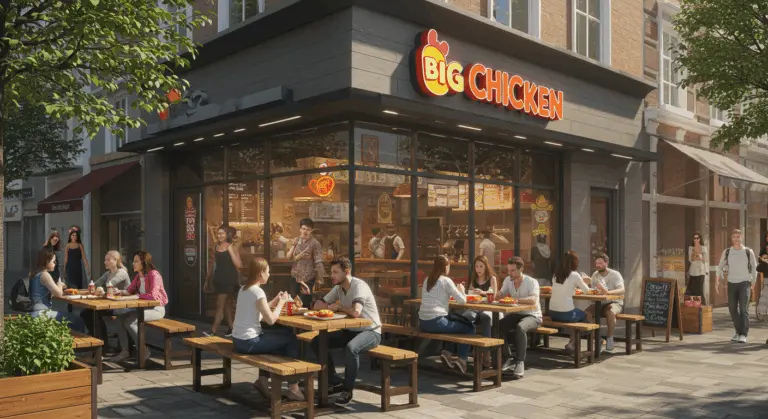Faire Valuation – Insights into the Company’s Financial Landscape
Overview of Free – The Online Wholesale Marketplace
Since its 2017 founding, Free has emerged as a transformative force in online wholesale, using advanced data analytics to bridge the gap between local retailers and thousands of emerging and established brands.
At its core, Free’s business model creates a symbiotic ecosystem. It connects independent retailers with small, independent brands worldwide, empowering these retailers to discover and purchase distinctive products at wholesale prices.
Free opens doors for brands to reach over 700,000 independent retailers while providing comprehensive tools for e-commerce management, fulfillment, and customer relationship building. The platform’s key differentiator is A clever payment structure where brands receive immediate payment while retailers enjoy net 60 terms—a win-win that dramatically improves cash flow for small producers.
Though Free hasn’t officially announced IPO plans, its sustained growth and substantial valuation have established it as a major player in wholesale marketplaces, changing how independent retailers and brands connect in our digital era.
Free’s Valuation Journey – From $12.6B to Current Estimates
Free’s valuation shows dramatic highs and sobering corrections. Following a $170 million Series E funding round that propelled its value to $2.5 billion, the company soared to a peak valuation of approximately $12.6 billion in 2022-2023.
Yet recent estimates paint a starkly different picture—the company’s valuation now hovers around $1.2 billion, calculated from reported revenue of $217 million and a 1.5x Hype Multiple. This represents a substantial market correction that reflects broader tech sector volatility.
Funding Rounds – Key Milestones in Free’s Growth
Strategic funding rounds have been important drivers in Free’s evolution, injecting the capital necessary to expand its platform and broaden market reach. Though details on later rounds like a Series G remain confidential, the company’s track record of successful fundraising demonstrates investor confidence in its underlying business model.
Financial Performance – Revenue and Growth Metrics
Free’s financial performance shows strong strategic growth. In 2023, the company achieved $616 million in revenue—a remarkable 73% leap from the previous year’s $355 million.
This growth came from Free’s strategic decision to increase its effective take rate from approximately 16.5% to 19%—a seemingly modest adjustment that yielded substantial returns.
Notably, despite experiencing some deceleration in gross merchandise volume (GMV) growth, Free managed to boost revenue substantially. This demonstrates the company’s masterful business model optimization—extracting more value from existing transactions rather than chasing volume at any cost.
These metrics reveal Free’s evolution into a mature, strategically-minded business. The company demonstrates remarkable adaptability, fine-tuning its revenue model while consistently delivering value to both retailers and brands.
Competitive Landscape – Who Competes with Free?
Free navigates an increasingly crowded wholesale marketplace, contending with both entrenched traditional distributors and nimble digital upstarts. Notable competitors include Tundra, Abound, and Handshake—each vying for market share in this evolving landscape.
Yet Free has carved out a distinctive niche by championing independent retailers and smaller brands—market segments traditionally overlooked by conventional wholesale channels.
Its competitive edge stems from innovative financial solutions, including those flexible net 60 payment terms, coupled with a comprehensive software suite encompassing storefront management, order fulfillment, and advanced analytics.
Expansion Strategies – How Free Plans to Grow
Free’s growth blueprint unfolds across multiple strategic dimensions:
These interconnected strategies utilize Free’s expansive network of brands and retailers, generating powerful network effects that amplify user value while creating strong competitive advantages.
Customer Base – Understanding Free’s Retailers
Free’s customer ecosystem encompasses approximately 700,000 independent retailers—predominantly small businesses with an appetite for distinctive products. The platform addresses their core needs by streamlining product discovery and mitigating financial risk, cultivating deep-rooted loyalty in the process.
Conclusion – The Future of Free and Its Valuation
Free’s valuation journey reflects both its meteoric growth trajectory and the inherent volatility plaguing private technology markets.
Despite these valuation fluctuations, Free shows strong resilience and adaptability within the wholesale marketplace sector. The company has weathered significant challenges—organizational restructuring, workforce reductions—yet maintained unwavering focus on innovation and platform enhancement.
Looking ahead, Free’s future valuation will likely be influenced by several key factors:
-
Its ability to maintain strong revenue growth.
-
Successful expansion into new geographic markets.
-
Continued innovation in its product offerings.
-
Overall profitability improvements.
Ultimately, Free’s capacity to evolve its strategies while preserving its fundamental value proposition will determine its long-term trajectory and market valuation.







